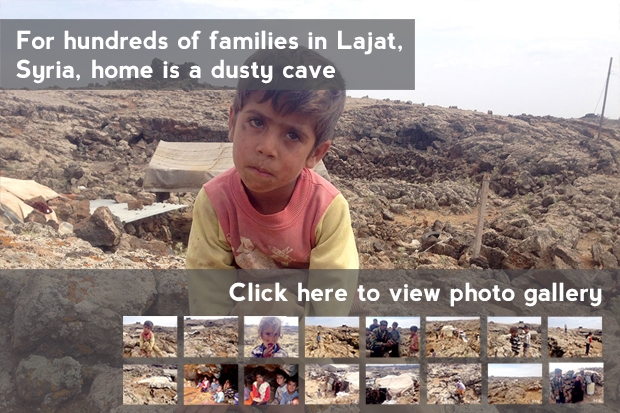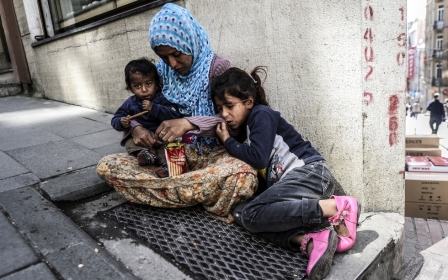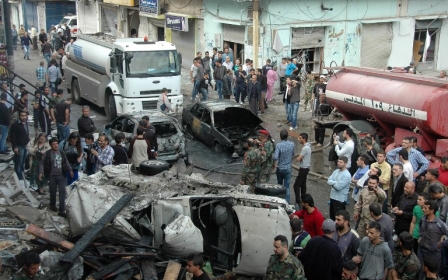For hundreds of families in Lajat, Syria, home is a dusty cave

Life is painful here. Water comes from a well 5km away and must be carried on foot, over sharp stones. Faces go dirty and children are thirsty. Shoes have become worn and children go without. Nothing can be grown in this rocky ground: families rely completely on donations, usually from locals with something to spare. Humanitarian organisations have so far been unable to reach the caves of Lajat.
The families are Bedouins from Eib, a tiny village in the area of Lajat, a rebel stronghold in south-west Dera’a province, just east of the Jordan River. The families told Middle East Eye that they had abandoned their homes and livelihoods in the spring of 2012, when fighting intensified in the region and cluster bombs began falling from helicopters. Two years later, they are still living in caves.
New MEE newsletter: Jerusalem Dispatch
Sign up to get the latest insights and analysis on Israel-Palestine, alongside Turkey Unpacked and other MEE newsletters
Middle East Eye delivers independent and unrivalled coverage and analysis of the Middle East, North Africa and beyond. To learn more about republishing this content and the associated fees, please fill out this form. More about MEE can be found here.





